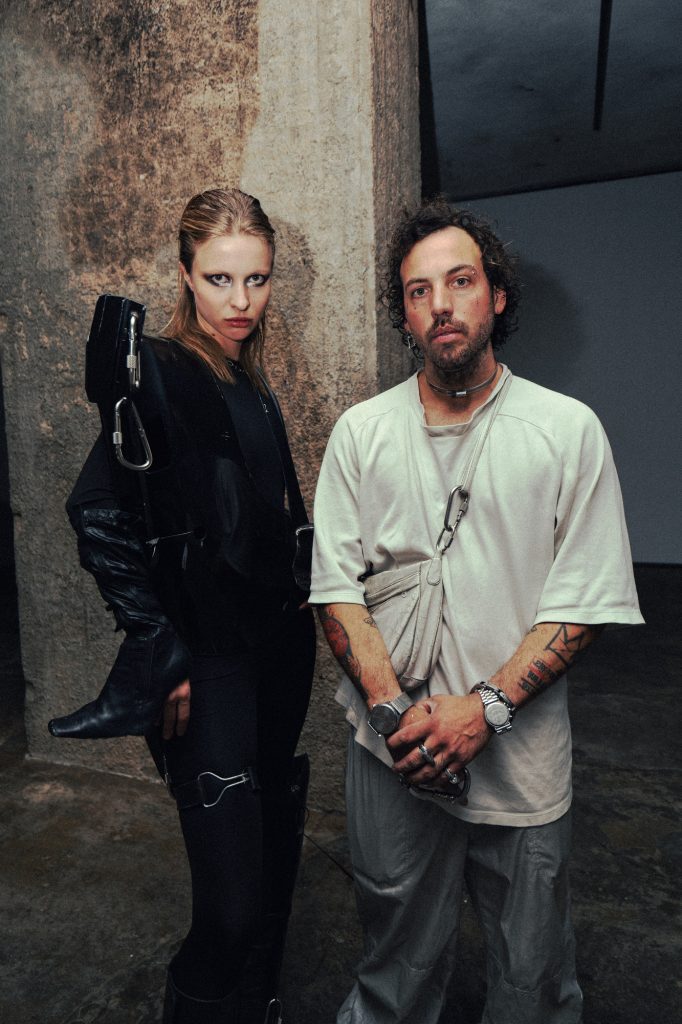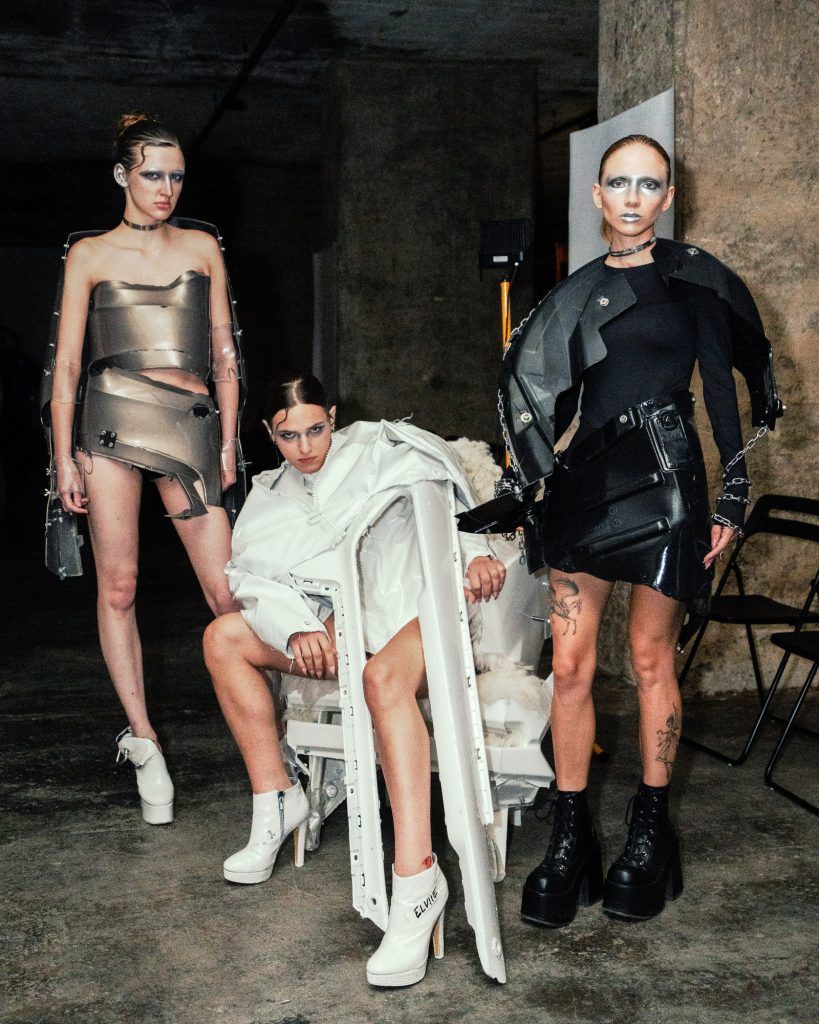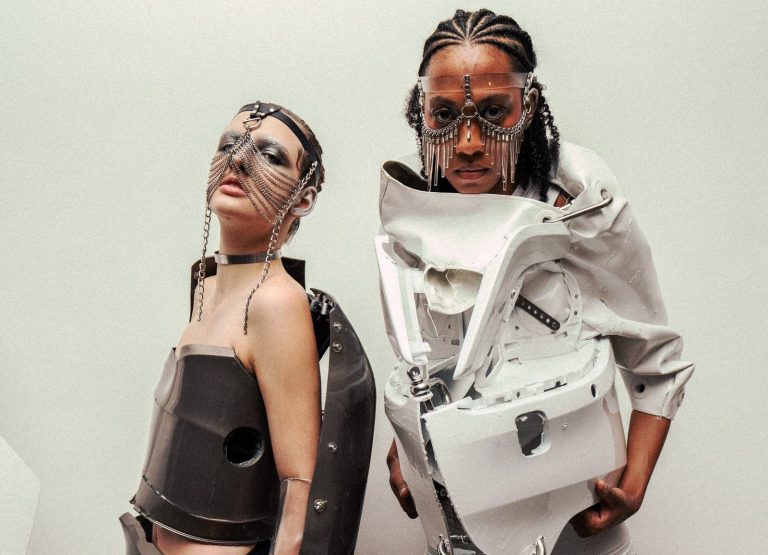
Photography by SHIN JEONG HOON

Photography by SHIN JEONG HOON
Cristian (Selva) Huygens, an Argentinian artist based in Berlin, is redefining the concepts of functional art and fashion through his unique Brutalist-inspired designs. From repurposed car doors to Lady Gaga’s runway looks, Selva blends raw materials with bold creativity, pioneering the Brutalist Functional Art Movement. On September 19th, Selva Huygens premiered a hybrid art and fashion exhibition, Future Fossils, in Lisbon, Portugal. Curated by Haize, the exhibition opened with a sound installation and a unique performance by Lara Dâmaso. This autumn, the Berlin-based avant-garde fashion brand Selva Huygens will present its first-ever capsule collection, created in partnership with the Lisbon-based art and publishing house Haize. The collection will introduce ready-to-wear pieces that stay true to the brand’s signature aesthetic.
hube: Your use of discarded materials to create functional art is fascinating. What is the most unusual material you’ve repurposed, and what was the story behind it?
Selva Huygens: The most unusual material? That would have to be a car door. A real, heavy metal car door. It was the first piece I developed in this brutalist style. I found it on the street and made a bench out of it – well, more like a bench chair. The story is that it was my first-ever piece, and at that time, no galleries were interested in my work. So one morning, I took the bench to an ATM bank and just placed it there, thinking: ‘I’m going to make my own exhibition’. And then, believe it or not, it got stolen! Someone took it from the ATM. But after that, I actually ended up doing an exhibition at that same ATM.
That was how everything started – showing my work in ATM banks. So that car door bench was definitely one of the most important pieces for me.
h: What inspired you to create the Brutalist Functional Art Movement, and how do you define this concept in your work?
SH: It started when I was figuring out my work. I wanted to bring everything together into one movement. Brutalist architecture was a big influence because I studied architecture, but I wasn’t sure which discipline was mine – furniture design, painting, whatever. So, I mixed it all together, and that’s how the Brutalist Functional Art Movement came about.
It’s about putting Brutalism into every discipline I work with. Right now, it’s fashion – like putting car parts on people. It’s raw, but also functional in a way. That’s the core of the movement.

